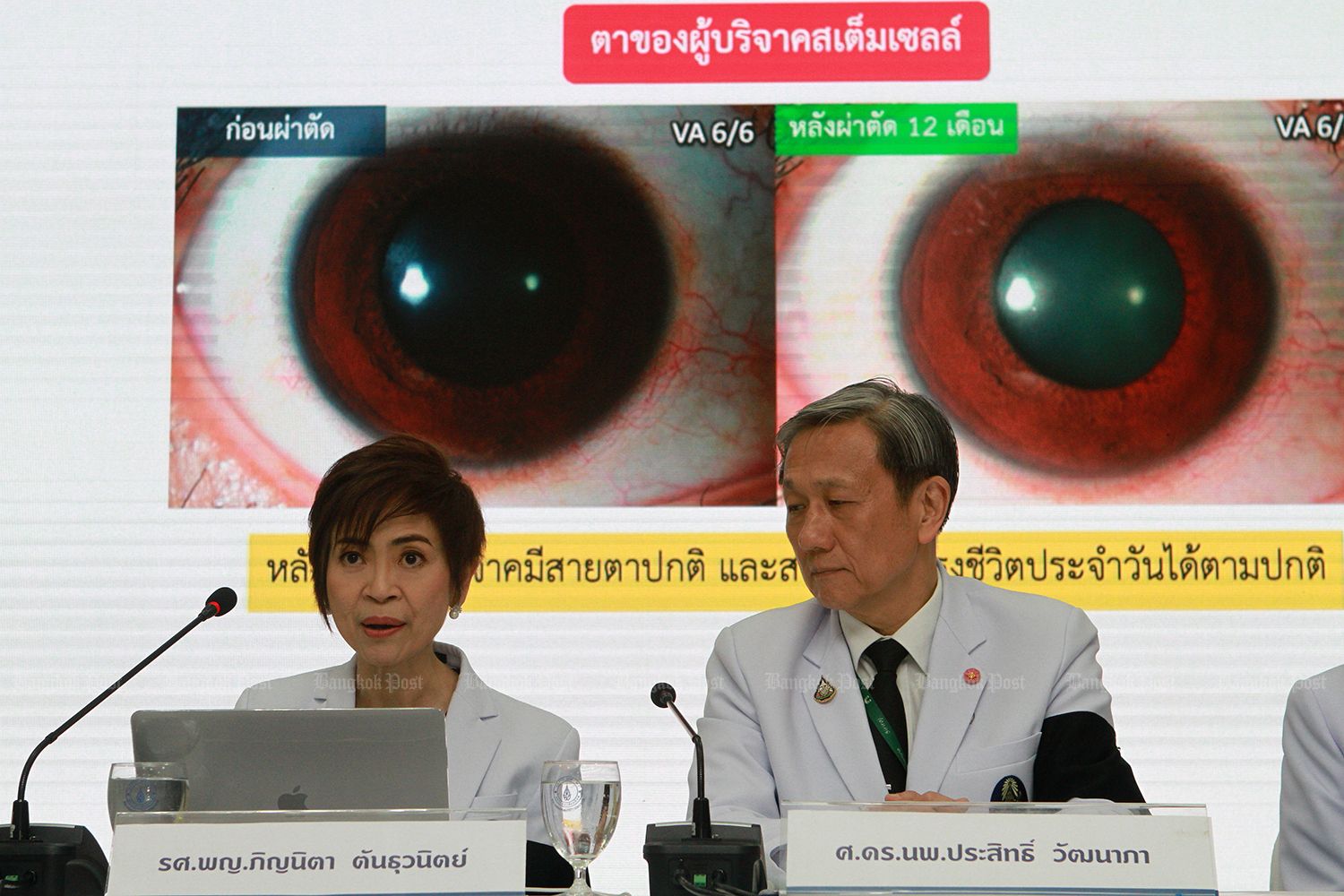
Ophthalmologists at Siriraj Hospital have successfully used stem cell transplants to help restore the sight of 75 partially- and completely- blind patients.
"This is the first time stem cell therapy is used in Thailand to help restore the sight of the visually-impaired," said the Dean of Mahidol University's Faculty of Medicine Prasit Watanapa yesterday. "We transplanted stem cells on 86 eyes of 75 patients."
The team of eye specialists at Siriraj Hospital used a technique known as "SLET" — which stands for Simple Limbal Epithelial Transplant — to reconstruct the patients' damaged corneas.
"Simply put, the technique involves the transplanting of cells directly without the need to create cell cultures in a laboratory before the procedure," said Dr Prasit, before adding that the method was first used five years ago in Thailand and has a success rate of 83% among Thai patients.
The conventional procedure that ophthalmologists use involves taking a corneal graft from a healthy donor, which is then added to undifferentiated stem cells and left to grow for two weeks prior to the transplant.
However, Dr Prasit added, SLET has proved to be more effective in restoring eyesight compared to the conventional technique, which has a success rate of only about 77% among Thai patients.
Dr Prasit said that the patients who took part in the procedures lost their eyesight due to a number of reasons, which include chemical accidents, and autoimmune diseases that reduce the patients' ability to naturally repair damaged corneal cells.
A healthy cornea, in addition to being the eye's first line of defence against foreign objects, is crucial for sight because it helps the eye's lenses focus light and images to the retina.
The cornea is made up of stem cells that are created in a specific areas surrounding the pupils.
“Patients who cannot produce enough stem cells to regenerate their damaged corneas can benefit from stem cell transplants,” said ophthalmologist Pinnita Tanthuvanit, who heads the faculty’s cornea and refractive surgery division.
"Patients suffering from Stevens-Johnsons Syndrome — a type of severe skin disorder — or were exposed to toxic chemicals, can also benefit from this procedure as their eyes also cannot produce enough stem cells."
Prakop Kachornrith, a patient suffering from Stevens-Johnsons syndrome, thanked the doctors at Siriraj Hospotal for restoring his eyesight after 22 years.
“I can see again, although it’s not as clear as before,” he said.
“At least now, I can do things by myself.”